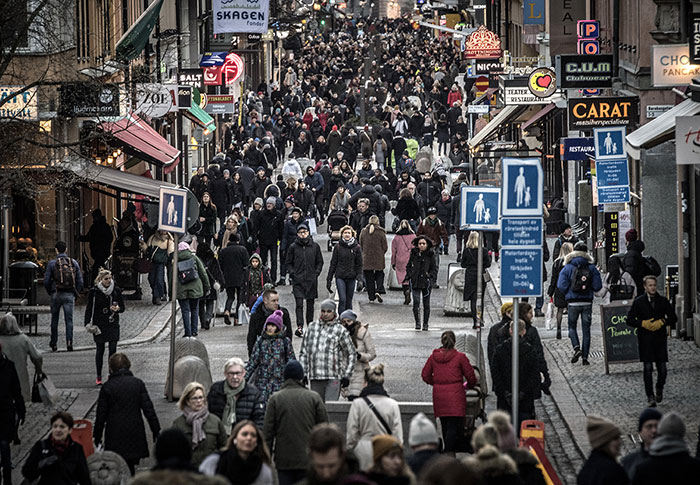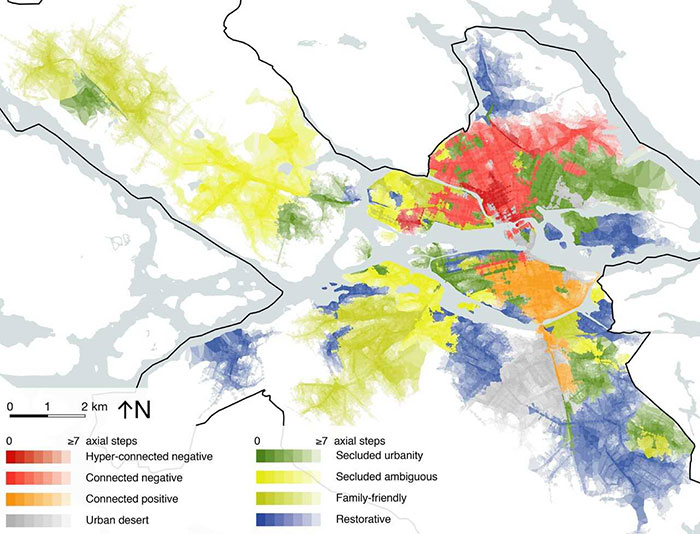An experience map containing almost 2000 experiences and covering almost the whole of the Stockholm municipality forms the basis for the researchers’ understanding for how these spaces are experienced. When studying city environments, it is common to look at one factor at a time, but this map enables the researchers to see to see what environments many different types of people find attractive. These city environments can be conducive to better health and social sustainability for an urban population.
“Actually, it is about seeing the city as a complex system where many factors continuously interact,” Karl Samuelsson explains.
A city open to diversity
Urban planning strategies should concentrate on avoiding certain environments rather than on finding optimal ones, their results show.
“Perhaps the best strategy is no to try find the best urban environments, but just avoid the worst type of city and urban environments, as more people will gain more from that.”
The experience map shows us that there are a number of different types of environments containing a variety of positive experiences, some are to the liking of certain people, while others suite a different type of person.
“We want our cities to be open to different types of people in this way. It is interesting to note that there are more positive than negative experiences on our map, and that the negatives ones tend to be more similar.”
Peace and quiet cherished even in Stockholm
The most common category of positive experiences is characterized by peace and quiet and of being in nature, while the second most common one is characterized by the presence of culture or history.
“As we are talking about Stockholm, we find these facts significant, surprising and thought-provoking for urban planners. We had one category for shopping and another one for meeting new people, going to restaurants etcetera, but they were not as popular.”
And being able to be yourself
There are a few particular environments that most people experience as negative. The most common negative experiences are the feeling of not being able to be yourself, finding it difficult to walk or ride a bicycle, becoming exhausted because it is hectic and loud and feeling unsafe.
“These are environments in which you simply do not feel free to be yourself, and we think this is connected to places that are uncomfortable to be in.”
Earlier, more was always better
An experiential perspective in urban planning is a new strategy. Earlier, there was a focus on service accessibility and researchers assumed that more was always better.
A high concentration of environments offering a diversity of experiences within walking distance can be a disadvantage, Karl claims, as it leads to crowding and stressful environments during certain parts of the day. During other parts of the day, these areas, like the city centre in Stockholm, may become empty and unsafe, as no one lives there.
“Accessibility is of course desirable in a city, but we can now demonstrate that there is a breaking point where concentrating crowds to certain locations to a very high extent, like in Stockholm, becomes a negative strategy.
Building living environments for people
If we change perspective from building a city to building living environments for people, it becomes clearer what we should try to achieve and what we should try to avoid, according to Karl Samuelsson. We could create a better mix in the city centre by including housing so that there would be people there at night too, and we could build many small smaller centres to avoid extreme concentration.
“Unfortunately, the present structure in Stockholm has been there for hundreds of years and it is hard to change, but we can try to avoid making it worse.”
Above all, smaller cities that are growing fast should avoid to put themselves in this position.
“Already at the planning stage, we should have a strategy to reduce road congestion when designing street structures. Building many small smaller centres could be another strategy.”








